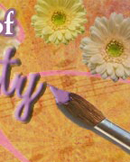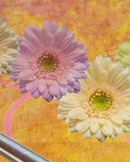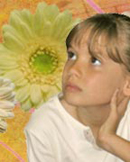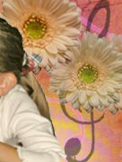As we have mentioned in previous weeks, the creative process is as important, if not more important, than the product. The question remains how do teachers evaluate the process and the product; what part should the gifted student play in the assessment process? Rubrics and portfolios are authentic assessment tools that allow the teacher to set standards, the student to set goals, and provide opportunities for the student to peer and self-assess. Rubrics and portfolios emphasis self-reflective thinking, meta-cognitive thinking, and allow students to set goals with realistic consideration toward their personal learning styles.
Rubrics
A rubric is a scoring tool for subjective assessments. It is a set of criteria and standards linked to learning objectives that is used to assess a student’s performance. Rubrics allow for standardized evaluation according to specified criteria that is otherwise too complex to evaluate. Rubrics also provide solid ground for self-evaluation, reflection, and peer review. Many teachers create rubrics and share them with the students before they begin a particular activity/project to make sure students understand what is expected and how they will be evaluated. Teacher-shared rubrics promote student authority and help maintain student and teacher transparency.
Student-authored rubrics also give the student authority over his project and allow the student to set and accomplish his own goals. As you have learned, gifted students thrive on being in control of their curriculum. Designing a rubric is extremely motivating for gifted students. Teachers still, and should, provide benchmarks or criteria that guide students so that learning objectives are understood and met, but the student is charged with identifying the criteria he/she will apply to his work.
In both teacher-designed and student-designed rubrics, periodic checklists should be established throughout the creative process in order for the student and teacher to document progress, evaluate the process, and stay on task. In addition, rubrics allow the teacher to integrate creativity across content and focus on the process as well as the product. Check out this great website for developing a rubric from scratch using a template, or seeing established rubrics that you can modify to suit your needs.
Student Portfolio and Student-Led Conference
![]() Another effective approach to creative assessment evaluation is the student portfolio and the student-led conference. A student portfolio consists of a collection of work selected by the student. Usually, the teacher develops the selection criteria, but the students choose the work they feel best represents their growth, process, ability, and performance milestones. Attention is placed on growth and what the student can do opposed to what they cannot. Students meet with their parents and teacher(s) to assess their progress throughout the school year. The opportunity to self-reflect is crucial to the development of creativity and gifted students. Self-refection allows students to monitor their progress, judge the extent to which they met their goals, and move forward by adjusting or setting new goals. This is another opportunity for students to help develop their curriculum.
Another effective approach to creative assessment evaluation is the student portfolio and the student-led conference. A student portfolio consists of a collection of work selected by the student. Usually, the teacher develops the selection criteria, but the students choose the work they feel best represents their growth, process, ability, and performance milestones. Attention is placed on growth and what the student can do opposed to what they cannot. Students meet with their parents and teacher(s) to assess their progress throughout the school year. The opportunity to self-reflect is crucial to the development of creativity and gifted students. Self-refection allows students to monitor their progress, judge the extent to which they met their goals, and move forward by adjusting or setting new goals. This is another opportunity for students to help develop their curriculum.
It’s important to remember that gifted students think and learn differently, thus their assessments should reflect the differences. Rubrics satisfy many of the outcomes for products and are often accompany portfolios.
In Summary
There are many approaches to teaching, facilitating and evaluating the creative process. Not all these suggestions will be for you! However, it’s important that you be aware of the issues facing gifted education. Creativity is essential to all aspects of gifted education including definitions, goals/objectives, identification, ethics, assessment and evaluation. Intellectually gifted students are developmentally advanced in many areas, and they need opportunities to pursue and attach creative applications to their school curriculum. This will keep them engaged, motivated, and, quite possibly, turn them into the future leaders of the world. The challenge is to move forward with new ideas to assist these students in their learning. Testing and evaluation is important, but represent just one aspect of who these students are. The creative process, however, is ongoing and will continue to serve them throughout their lifetime.






